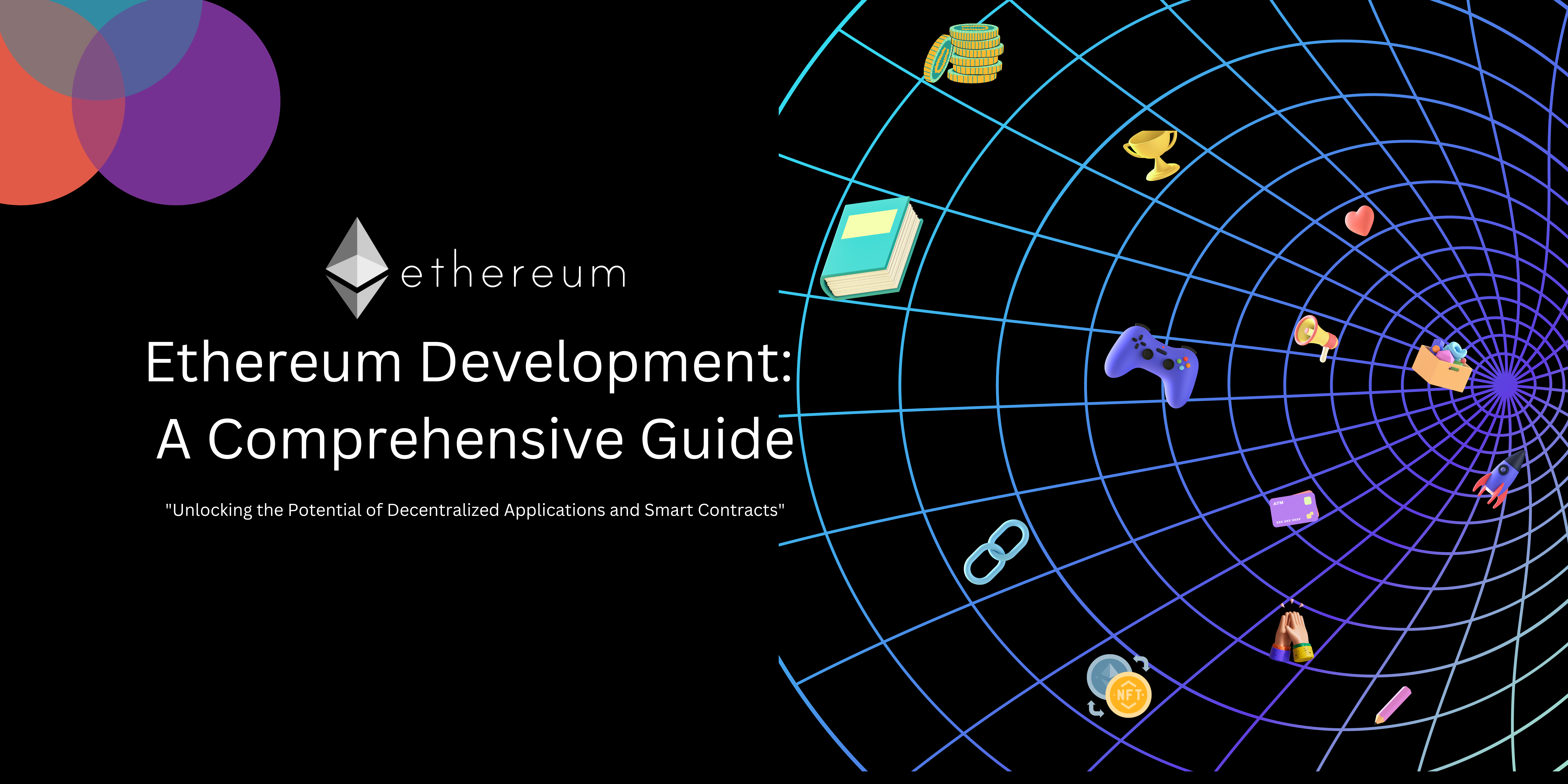Ethereum Development: A Comprehensive Guide
 KANISHAK CHAURASIA
KANISHAK CHAURASIA
Ethereum, the second-largest cryptocurrency by market capitalization, is not only a digital currency but also a versatile platform for decentralized applications (DApps) and smart contracts. As the world of blockchain technology continues to evolve, understanding Ethereum development has become essential for aspiring blockchain developers and entrepreneurs. In this comprehensive guide, we will provide an overview of the tools, languages, and frameworks available for Ethereum development, along with step-by-step tutorials on building simple smart contracts and decentralized applications.
Tools and Prerequisites:
Before diving into Ethereum development, you'll need some basic prerequisites and tools:
Solidity: Solidity is the most popular programming language for writing smart contracts on the Ethereum platform. It is similar to JavaScript and specifically designed for Ethereum's virtual machine.
Remix IDE: Remix is a web-based integrated development environment that allows you to write, test, and deploy smart contracts. It comes with a user-friendly interface and built-in debugging features.
Metamask: Metamask is a browser extension that acts as an Ethereum wallet and allows you to interact with DApps and smart contracts seamlessly.
Truffle: Truffle is a development framework that provides tools for managing smart contracts, migrations, and testing.
Building Simple smart contract:
Let's start by building a simple smart contract on Ethereum using Solidity and Remix IDE:
Step 1: Install Metamask
- Install Metamask in your preferred browser and create an Ethereum wallet. Get some test Ether (Sepolia or GoerliETH) from a faucet to deploy and test your smart contract.
Step 2: Access Remix IDE
- Open the Remix IDE (https://remix.ethereum.org/) in your browser.
Step 3: Create a New File
- Click on the "+" icon in the File Explorers panel to create a new file. Name it "SimpleStorage.sol".
Step 4: Write the Smart Contract
// SPDX-License-Identifier: MIT
pragma solidity ^0.8.0;
contract SimpleStorage {
uint256 public data;
function setData(uint256 _data) public {
data = _data;
}
function getData() public view returns (uint256) {
return data;
}
}
Step 5: Compile the Smart Contract
- In the Solidity Compiler plugin, select "SimpleStorage.sol" and click "Compile." Ensure there are no compilation errors.
Step 6: Deploy the Smart Contract
- Go to the "Deploy & Run Transactions" plugin. Make sure your Metamask is connected to the test network. Select "SimpleStorage" from the "Contract" dropdown, and click "Deploy." Confirm the transaction in Metamask.
Step 7: Interact with the Smart Contract
- Once the contract is deployed, you can interact with it. Call the
setData()function with a new value and then call thegetData()function to verify the changes.
Building a Decentralized Application (DApp)
Now, let's create a simple decentralized application that interacts with our previously deployed "SimpleStorage" smart contract:
Step 1: Set Up Truffle
- Install Truffle globally by running
npm install -g trufflein your terminal.
Step 2: Create a New Truffle Project
- Create a new directory for your DApp and run
truffle initinside the directory. This will set up a basic Truffle project structure.
Step 3: Add Contract and Migration
- Place the "SimpleStorage.sol" smart contract in the "contracts" directory. Also, add a migration file in the "migrations" directory to deploy the contract to the test network.
Step 4: Deploy the Smart Contract
- Run
truffle migrate --network <network>to deploy the smart contract to the desired network (replace<network>with the target network like "Sepolia" or "mumbai").
Step 5: Build the Frontend
- Create a new directory named "frontend" and add an HTML file and a JavaScript file to interact with the smart contract using Web3.js.
Step 6: Interact with the Smart Contract
- In the JavaScript file, use Web3.js to connect to the deployed smart contract, set and get data from the contract using its methods, and update the frontend accordingly.
Conclusion
Congratulations! You've just scratched the surface of Ethereum development by building a simple smart contract and a basic decentralized application. Ethereum's vast ecosystem offers endless possibilities for blockchain developers to create innovative DApps and redefine various industries.
Remember that this guide provides only a glimpse of Ethereum development. As you progress, explore more advanced topics like security best practices, token standards (ERC-20, ERC-721), and integrating with external APIs. Stay curious, keep learning, and embrace the ever-evolving world of Ethereum development. Happy coding!
This blog was written under Social3 Degens Program. Social3 is a go-to place for web3 jobs, internships and opportunities! If you are looking for opportunities, find them here 👉 https://app.social3.club/jobs 🚀
Follow us on Twitter- https://twitter.com/Social3Club
Subscribe to my newsletter
Read articles from KANISHAK CHAURASIA directly inside your inbox. Subscribe to the newsletter, and don't miss out.
Written by

KANISHAK CHAURASIA
KANISHAK CHAURASIA
I'm community builder and a frontend developer. Experienced in Nextjs and tailwind css. keen interest in web3 and blockchain